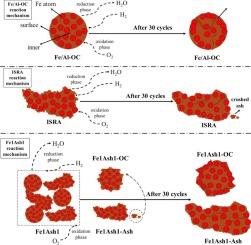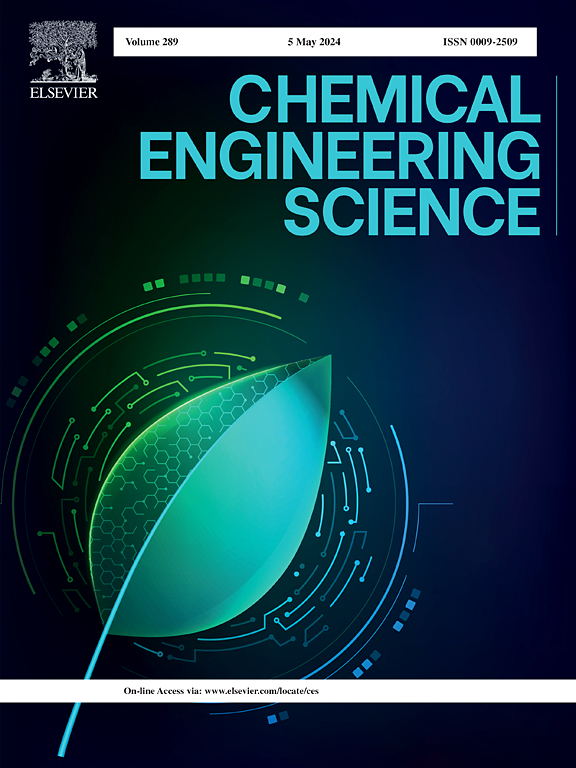Characteristics of iron phase migration and redox performance of Fe/Al particles blending with iron-rich sludge ash
IF 4.1
2区 工程技术
Q2 ENGINEERING, CHEMICAL
引用次数: 0
Abstract
The problem of iron phase enrichment leading to activity decay to failure is currently a bottleneck in the industrialization of iron-based oxygen carriers (OCs) in chemical looping technology. Owing to the poly iron/poly aluminum coagulants usually used in wastewater disposal and finally into the sludge, sludge ash contains a high proportion of iron oxides. To investigate whether sludge ash has the potential to be an economic OC or an auxiliary iron-based OC, iron-rich sludge ash (IRSA), Fe/Al-OC, and their mixed OC in equal proportions (Fe1Ash1) were tested in 30 redox cycles using a thermogravimetric analyzer (TG) and tubular furnace. The TG analysis combined with BET and SEM results could present the following results. The IRSA shows a high oxygen-carrying capacity only in the first two cycles; Fe/Al-OC has a lower oxygen-transferring capacity, the Fe-phase enrichment and mechanical strength impairment are kept during multi-cycling reactions. As for Fe1Ash1, the oxygen-carrying capacity was higher than the theoretically weighted value, and the sintering of the sludge ash was slowed down. However, fragmentation and the low-melting-point Fe-containing components in the sludge ash were still present, and the released components and fragmented under higher temperature adhered to the surface and increased the surface Fe phase density of the Fe/Al-OC particle, the Fe concentration difference between the surface and section inhibited the migration of section Fe moving to the surface. Consequently, by blending IRSA, the iron phase migration of Fe/Al-OC was inhibited and the oxygen transfer performance was improved.


求助全文
约1分钟内获得全文
求助全文
来源期刊

Chemical Engineering Science
工程技术-工程:化工
CiteScore
7.50
自引率
8.50%
发文量
1025
审稿时长
50 days
期刊介绍:
Chemical engineering enables the transformation of natural resources and energy into useful products for society. It draws on and applies natural sciences, mathematics and economics, and has developed fundamental engineering science that underpins the discipline.
Chemical Engineering Science (CES) has been publishing papers on the fundamentals of chemical engineering since 1951. CES is the platform where the most significant advances in the discipline have ever since been published. Chemical Engineering Science has accompanied and sustained chemical engineering through its development into the vibrant and broad scientific discipline it is today.
 求助内容:
求助内容: 应助结果提醒方式:
应助结果提醒方式:


